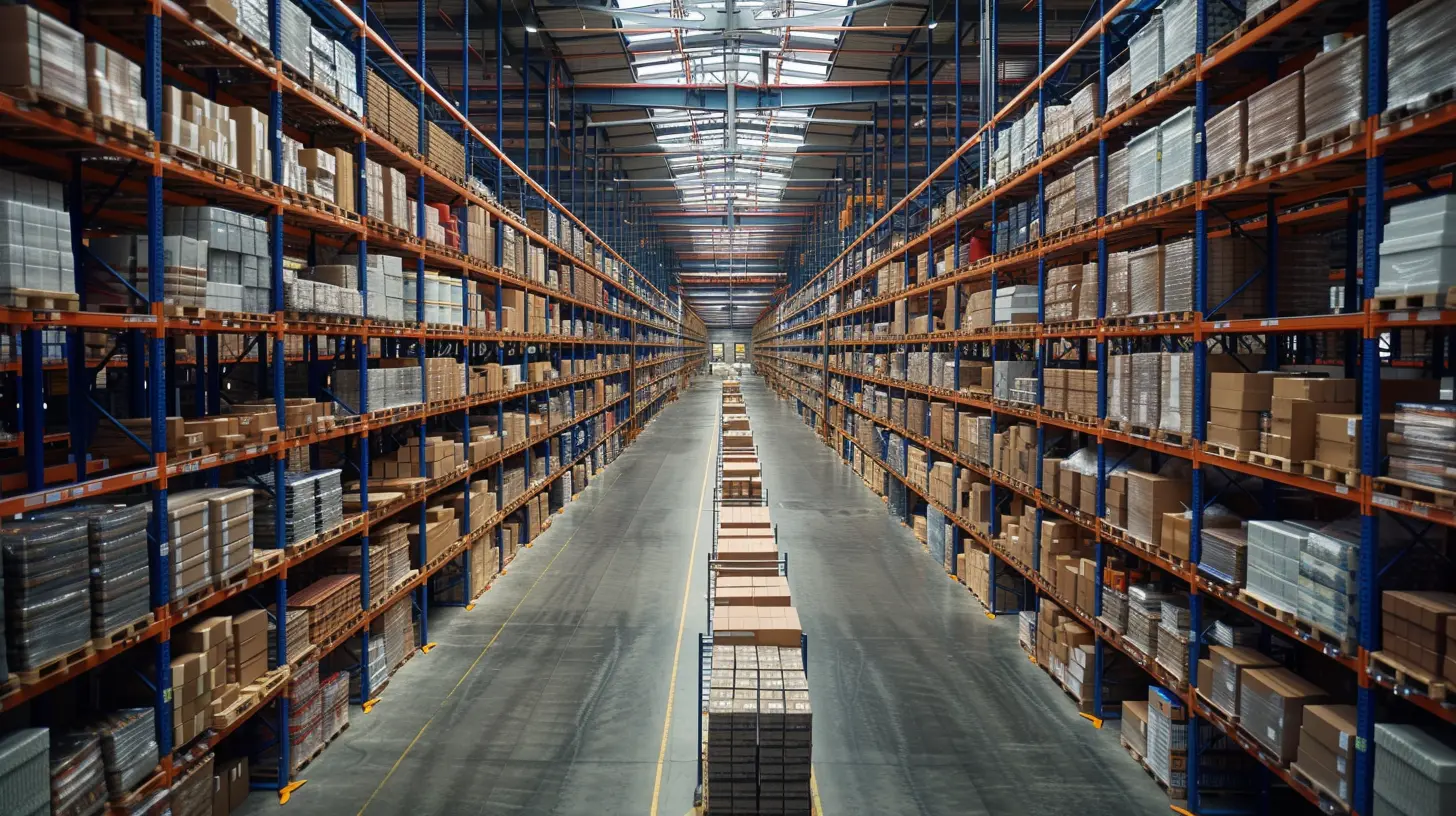How to Optimize Your Supply Chain for Business Growth
20 October 2025
Let’s face it—running a business is no walk in the park. Between juggling customer expectations, keeping costs in check, and staying ahead of the competition, you've got your hands full. But here's the secret sauce many businesses overlook: Supply chain optimization.
Yep, that’s right. Your supply chain isn’t just about moving products from Point A to Point B. It’s a complex, dynamic system that—when done right—can become a powerful growth engine for your business.
In this deep dive, we’re going to break down exactly how to optimize your supply chain for business growth. No fluff. Just real, actionable strategies you can use today.
What Is Supply Chain Optimization Anyway?
Let’s start with the basics. Supply chain optimization is all about making your supply chain more efficient, responsive, and cost-effective. That covers everything from sourcing raw materials to delivering the final product to your customer’s doorstep.Imagine the supply chain as the bloodstream of your business. If there’s a blockage or inefficiency, it affects the whole body. But get it flowing smoothly? You’ve got a thriving, healthy company ready to scale.
Why Optimizing Your Supply Chain Is a Game-Changer
Still not convinced it's worth the effort? Let's talk benefits:- 🚀 Faster delivery times
- 💵 Lower operating costs
- 🧠 Improved decision-making through data insights
- 📈 Increased customer satisfaction
- 🔄 More agility in adapting to market changes
Optimizing your supply chain can unlock these benefits and more, setting the stage for long-term growth and profitability.
Step 1: Get a Clear Picture of Your Current Supply Chain
Before you can make any changes, you've got to understand what you're working with.Think of it like trying to lose weight. You wouldn’t start a new diet plan without first stepping on the scale, right?
Start by mapping out your entire supply chain—from suppliers to end-consumers. Ask yourself:
- Where are the bottlenecks?
- Are there delays or inefficiencies?
- What’s costing you the most money?
Use software tools like ERP (Enterprise Resource Planning) or SCM (Supply Chain Management) platforms to collect data and build a clear visual of your process.
Step 2: Build Strong Relationships with Suppliers
Here’s something people often overlook: your suppliers are more than just vendors—they’re partners in your success.Building strong, transparent relationships can lead to:
- Better pricing
- More reliable lead times
- Early access to new products or materials
Pro Tip: Don’t just pick a supplier based on the lowest price. Look for reliability, communication, and flexibility. Sometimes paying a little more up front can save you big bucks (and headaches) down the road.
Step 3: Embrace Automation (Seriously)
If you're still managing supply chain tasks manually—stop. You're leaving money on the table.Automation tools can help you:
- Track inventory in real-time
- Generate demand forecasts
- Manage orders and shipments
- Handle invoicing and accounting
Think about it like replacing an old flip phone with a smartphone. You get way more capability, speed, and insight. It’s a no-brainer.
Software like Oracle SCM, SAP, and even smaller tools like TradeGecko or Zoho Inventory can scale with your business and make your life easier.
Step 4: Monitor and Manage Inventory Like a Pro
Too much inventory? You’re bleeding money. Too little? You lose sales.The sweet spot lies in just-in-time inventory management—keeping just enough product in stock to meet demand without overstocking.
Here’s what helps:
- Real-time inventory tracking software
- Forecasting customer demand based on historical data
- Safety stock planning for high-demand seasons
The goal? To have the right product, in the right place, at the right time—every time.
Step 5: Leverage Data for Smarter Decisions
You don’t have to be a data scientist to use data effectively. But you do need to know where to look.Pay attention to:
- Lead times
- Order fulfillment rates
- Shipping times
- Customer return rates
- Inventory turnover
When you track these KPIs (Key Performance Indicators), you're not guessing anymore—you’re making smarter, data-driven decisions that fuel business growth.
Step 6: Optimize Logistics and Shipping
Shipping costs can turn into a silent profit killer if you're not careful.Here are a few tips to tighten the belt:
- Use multi-carrier shipping solutions to compare real-time rates and get the best deal.
- Negotiate contracts with your logistics partners. They want your business—use that as leverage.
- Consolidate shipments whenever possible to reduce frequency and costs.
- Improve last-mile delivery using route optimization tools or third-party logistics (3PLs).
Your shipping processes should be as smooth and cost-effective as the rest of your supply chain. Don’t let this piece be the wrench in the gears.
Step 7: Reduce Waste and Go Green
Sustainability isn't just trendy—it’s smart business. Reducing waste saves money and improves your brand image.Here’s how you can green your supply chain:
- Use recyclable or biodegradable packaging.
- Source materials from eco-friendly suppliers.
- Optimize routes to reduce fuel consumption.
- Minimize overproduction with better forecasting tools.
Consumers are increasingly choosing brands that care about the planet. Aligning your supply chain with sustainability goals can actually attract more customers.
Step 8: Train and Empower Your Team
Your supply chain is only as strong as the people running it.Make sure your team:
- Understands the bigger picture
- Knows how to use your systems and tools
- Feels empowered to make decisions and suggest improvements
Conduct regular training sessions, encourage collaboration, and create a culture of continuous improvement. Sometimes the best optimization ideas come from the warehouse floor, not the boardroom.
Step 9: Plan for the Unexpected
If the COVID-19 pandemic taught us anything, it’s that supply chains are vulnerable to disruption. Whether it’s a natural disaster, political unrest, or a spike in demand—things can go sideways fast.Here’s how to build resilience:
- Diversify your supplier base (don’t put all your eggs in one basket)
- Keep a buffer stock of critical items
- Develop contingency plans and disaster recovery strategies
Think of this as supply chain insurance—something you hope you won’t need, but you’ll be glad you have when the unexpected happens.
Step 10: Continuously Improve
Optimization isn’t a one-time deal.You need to regularly assess your supply chain’s performance and look for new opportunities to improve. Set quarterly or bi-annual reviews and involve team members from different departments. Innovation often comes from collaboration.
Use feedback loops, monitor key metrics, celebrate wins, and refine what’s not working. The goal is getting a little better every day.
Final Thoughts: Turning Your Supply Chain Into a Growth Engine
Optimizing your supply chain isn’t just about trimming fat—it’s about building muscle. A well-oiled supply chain gives your business the agility to scale, the insight to improve, and the efficiency to stay competitive.So, whether you're a startup figuring things out or a seasoned business looking to grow, now’s the perfect time to invest in your supply chain.
Because at the end of the day, growth isn’t about doing more—it’s about doing it better.
Quick Recap: 10 Actionable Tips to Optimize Your Supply Chain
1. Map and analyze your current supply chain.2. Strengthen relationships with suppliers.
3. Use automation and modern software tools.
4. Manage inventory efficiently to avoid overstock or shortages.
5. Use data to drive your decisions.
6. Optimize your logistics and shipping processes.
7. Reduce waste and boost sustainability.
8. Train and empower your team.
9. Prepare for disruptions with contingency planning.
10. Commit to continuous improvement.
Start with one or two of these strategies and build from there. Your future self (and profitability) will thank you.
all images in this post were generated using AI tools
Category:
Business ExpansionAuthor:

Baylor McFarlin
Discussion
rate this article
1 comments
Catherine Benson
Great insights! Optimizing the supply chain is crucial for sustainable growth. Looking forward to implementing these strategies!
October 28, 2025 at 12:17 PM

Baylor McFarlin
Thank you! I'm glad you found the insights valuable. Wishing you success in your implementation!


